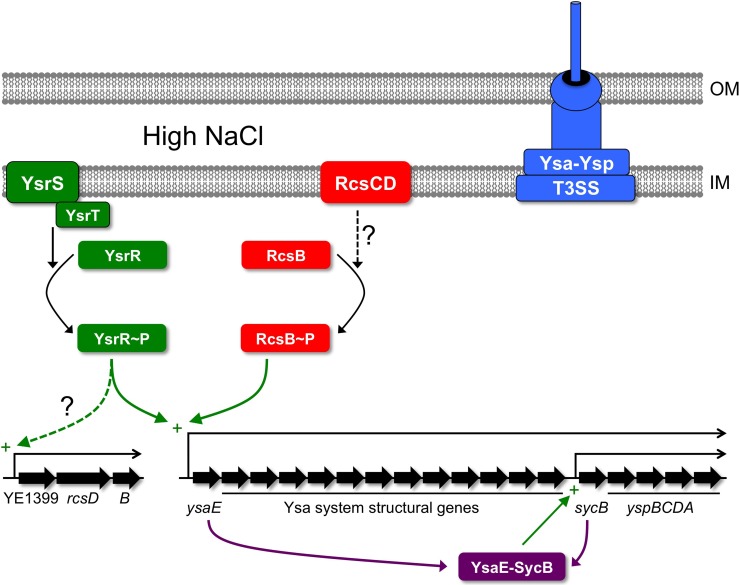Figure 1.
Regulation of the Ysa-Ysp T3SS in Y. enterocolitica. Increased expression of the genes encoding the Ysa-Ysp system depends on the phosphorelay system composed of YsrS, YsrT, and YsrR. High salt might be sensed by YsrS, which then phosphorylates the response regulator YsrR (with the involvement of the accessory protein YsrT). YsrR~P activates the ysaE promoter directly or indirectly. The result is increased levels of the proteins making up the Ysa-Ysp system, including the AraC-like regulator YsaE and the Ysp chaperone SycB. YsaE and SycB form a complex that activates a promoter up-stream of sycB, further elevating the levels of Ysp proteins. In addition, the YsaE-SycB complex induces other ysp genes located elsewhere on the chromosome (not shown). In addition to regulation by the Ysr phosphorelay, the RcsB component of the Rcs ESR also has a positive regulatory role. In this case, RcsB~P might induce the ysaE promoter similarly to YsrR~P, although once again it is not yet known if this regulation involves a direct interaction between RcsB~P and the ysaE control region. It is also not known whether the RcsCD components of the Rcs system are responsible for driving phosphorylation of RcsB during activation of the Ysa-Ysp system. Finally, the Ysr regulatory system might also play a role in activating the expression of rcsB. The structure of the operon containing rcsB is inferred from the gene arrangement in the chromosome of Y. enterocolitica strain 8081 (Thomson et al., 2006). OM, outer membrane; IM, inner (cytoplasmic) membrane.

